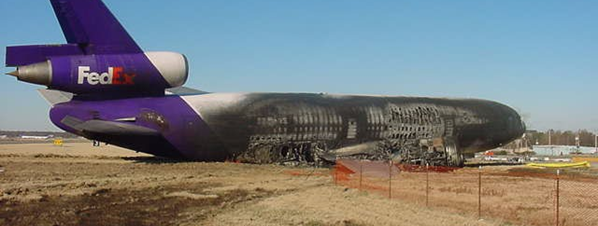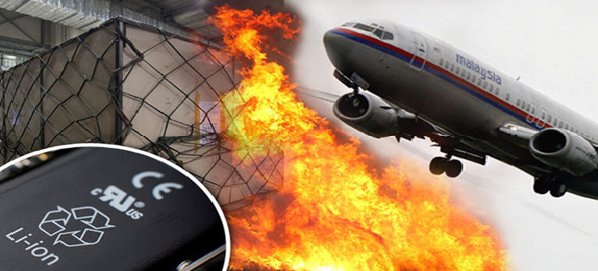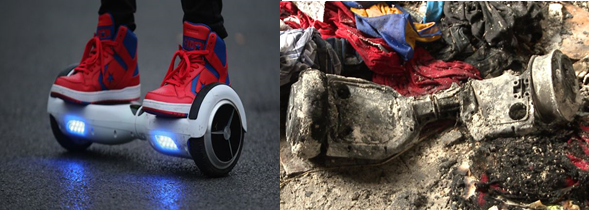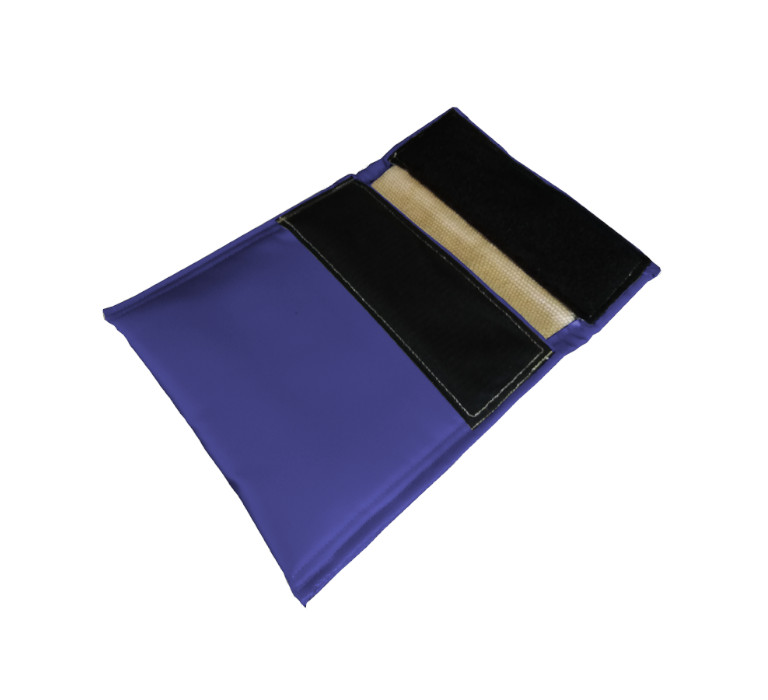Lithium battery fire hazard in the aviation industry
In recent years, there is a growing number of lithium battery fires on aircraft. These incidents range from localized and limited fires to large, uncontrollable in-flight fires resulting in hull losses and fatalities. The cargo compartments of passenger aircrafts are fitted with fire surpression systems - namely Halon 1301 (class C) or oxygen starvation (class E) –, but in most cases they are not effective in stopping a thermal runaway. Consequently, lithium batteries in cargo are prohibited for cariage on board of passenger aircraft.
Hundreds of millions of Lithium batteries or equipment with Lithium batteries are carried on aircraft annually. On a typical flight, an aircraft carrying 100 passengers could have more than 500 lithium batteries on board. This includes devices such as laptop computers, tablet devices, mobile phones, powerbanks, cameras, electronic watches, e-readers. Also carry-on items such as Portable IF and defibrillators carries Lithium batteries. Furthermore, more and more flying crews are taking advantage of the capabilities offered by Electronic Flight Bags (EFBs) The majority of which use Lithium batteries as a primary power source. But Lithium batteries may also enter a cockpit in the form of a flashlight, laptop, iPad, camera, mobile phone etc.
It is clear that lithium batteries presents a significant threat to pilots, passengers, aircraft and ground crews. Not only due to the number of batteries on board, but also to the difficulty in gaining access during an emergency.
A total of 171 incidents between 1991 and 2016 was recorded involving batterys carried as baggage or cargo on airplanes. (recorded by the US Federal Aviation Administration) .
On August 7, 2004, a shipment of lithium ion batteries being loaded on a FedEx aircraft in Memphis, TN caught fire. The fire was discovered while being loaded onto a flight destined to Paris from Memphis, TN.

2006: Destruction of UPS plane in Philadelphia caused by ignition of Li-Ion batteries, resulting in the death of two crewmembers. Besides the intense fire and toxic fumes, thick smoke inside the cockpit was reported.

2010: Two fatalities when a cargo plane crashed shortly after take off in Dubai. Cargo: 81.000 Lithium batteries..

January 16, 2013: a serious incident involving the main battery occurred aboard a 787 airplane operated by All Nippon Airways during a flight from Yamaguchi to Tokyo, Japan. The airplane made an emergency landing in Takamatsu, Japan, shortly after takeoff.
Another known fact is that the Malaysian MH370 aircraft carried a consignment of lithium ion batteries. This has given rise to the theory that this freight may have caused a fire in the cargo hold, which necessitated the captain to change course toward the west looking for the nearest airport to land.

On 26 April 2014, a passenger checked in four bags for a flight from Melbourne,to Nad. The operating aircraft was a Boeing 737. Before departure, a ground engineer observed smoke emanating from the aft cargo hold, alerted the aerodrome rescue and firefighting (ARFF) service. The ARFF and Australian Federal Police subsequently inspected all four of the bags checked in by the passenger and found 19 batteries intact and an additional 6-8 that were destroyed by a fire cause by Lithium batter thermal runaway.
December 2015, Hoverboards, or self-balancing scooters, have been linked with at least 99 electrical fires in the U.S., according to the the Consumer Product Safety Commission. Delta Air Lines banned hoverboards in carry-on and checked baggage, citing the product’s fire hazard risk. British Airways and JetBlue, among others, also bans the devices from flights.




